Over the past couple of months, I put the Otso Warakin Steel Gravel Bike through its paces, clocking 350 miles that included an overnight bikepacking trip and several extended rides. Despite typically preferring bikes equipped with 2.2″ tires, I consistently found myself choosing the Warakin throughout this fall season. In this review, I aim to articulate the reasons behind my preference.
As regular followers of our website and YouTube channel might have observed, our in-depth reviews of dedicated gravel bikes are relatively infrequent. This isn’t due to any aversion to them, but rather our inclination towards bikes with larger tires for enhanced capability, comfort, and adaptability. Nevertheless, it’s worth noting that each time I’ve evaluated a gravel bike for our platform, I’ve gained valuable insights.
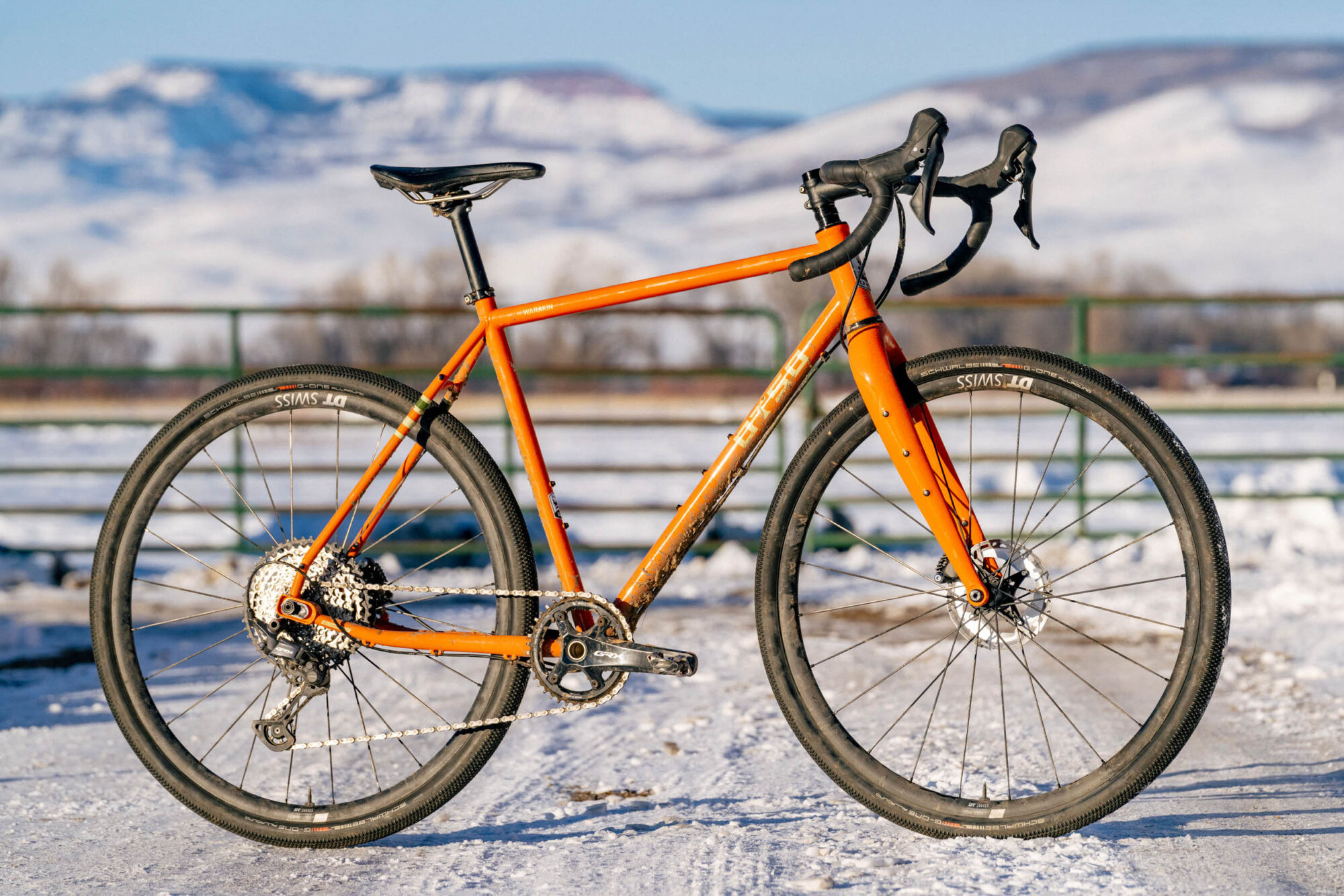 Otso Warakin Review Steel
Otso Warakin Review Steel
The Warakin, crafted by Otso, is positioned as an all-road bike, engineered to excel in various scenarios, from mixed-surface rides to bikepacking overnighters, gravel races, and daily commuting. Key features include adjustable geometry, provisions for cargo and fenders, clearance for up to 50mm tires, suspension-corrected geometry, and compatibility with both geared and singlespeed configurations.
To provide context, it’s important to understand my cycling background to appreciate my perspective. While it might not be relevant in every review, it’s a valuable reminder: my cycling journey began in racing. Or, at least, that’s when my passion for cycling truly ignited. Although I wasn’t the fastest in single-day races, I discovered my niche in multi-day endurance events like the Tour Divide and Colorado Trail Race. These demanding events necessitate consistent effort over prolonged durations, and having an efficient bike significantly simplifies the challenge.
Efficiency remains a core priority for me, deeply ingrained from my racing days. While my understanding of efficiency has broadened, particularly through testing various bikes for this website, it’s always a factor I consider on every ride. For me, efficiency is a crucial aspect alongside comfort, capability, and features, especially when it comes to bikepacking or long-distance cycling. The terrain we encounter greatly influences efficiency, and this is where the Otso Warakin truly shines. It’s undoubtedly efficient, but how efficient is a gravel bike constructed from steel when navigating diverse terrains? Continue reading to discover the answer, with a detailed written review complemented by photos and insights.
Despite being categorized under the gravel bike umbrella, the steel Warakin is officially designated as an all-road bike by Otso. It represents the most versatile road-oriented metal bike in their lineup. It accommodates tires up to 650B/700C x 50mm, a feature influenced by their innovative Tuning Chip dropout system. While 50mm tires fit in the rear and middle tuning chip settings, they won’t clear in the shortest 420mm chainstay configuration. However, these are more guidelines than strict limitations. I successfully tested the bike with 55mm Fleecer Ridge tires in the 440mm position without any issues, although I didn’t encounter severe mud conditions to rigorously test clearance.
The Tuning Chip system is a notable feature unique to Otso bikes, excluding their new hardtail, the Hoot. Essentially, it’s an adjustable dropout that allows for positioning the rear axle either forward or backward, resulting in a 20mm variance in chainstay length. A middle-position chip is also available, providing the Warakin with 430mm chainstays and a 1033mm overall wheelbase. Furthermore, Otso offers sliding insert chips for even greater adaptability, enabling single-speed setups.
Geometry and Fit of the Steel Gravel Bike
Standing at 5’9.5″ (176.5 cm) with a 32-inch (81.3 cm) inseam and slightly longer arms for my height, the 56cm frame size of the Warakin proved to be a good fit. Standover clearance was a bit snug, typical for this bike style, but a worthwhile trade-off for enhanced frame triangle space. The 383mm reach initially seemed compact on paper, but when paired with a 90mm stem, I felt a slightly more forward-leaning position than usual. Although I considered a shorter stem, I adapted to the fit and adjusted quickly. This adaptability is partly due to the relatively high 596mm stack height compared to other gravel bikes I’ve tested. The overall geometry results in what I would describe as a comfortably aggressive position.
| Size | 49cm | 52cm | 54cm | 56cm | 58cm | 60m |
|---|---|---|---|---|---|---|
| Recommended rider height | 4’11”-5’2″ | 5’2″-5’4″ | 5’4″-5’8″ | 5’8″-6’0″ | 6’0″-6’2″ | 6’2″-6’5″ |
| Recommended rider inseam | 25″-29″ | 28″-30″ | 30″-33″ | 32″-34″ | 33″-35″ | 34″-37″ |
| Effective top tube | 510mm | 530mm | 545mm | 565mm | 580mm | 600mm |
| Nominal head tube angle | 70° | 70.5° | 71° | 71.5° | 72° | 72° |
| Tuning Chip induced head/seat tube angle change | ±0.2° | ±0.2° | ±0.2° | ±0.2° | ±0.2° | ±0.2° |
| Head tube length | 87mm | 95mm | 115mm | 140mm | 165mm | 185mm |
| Nominal seat tube angle | 75° | 74.5° | 74° | 73° | 72.5° | 72° |
| Seat tube length | 400mm | 505mm | 530mm | 550mm | 570mm | 590mm |
| Bottom bracket drop | 58-62mm | 68-72mm | 68-72mm | 68-72mm | 68-72mm | 68-72mm |
| Chainstay length | 410-430mm | 420-440mm | 420-440mm | 420-440mm | 420-440mm | 420-440mm |
| Wheelbase | 1000-1020mm | 1017-1037mm | 1023-1043mm | 1028-1048mm | 1032-1052mm | 1046-1066mm |
| Trail | 70mm | 71mm | 70mm | 67.5mm | 65mm | 65mm |
| Fork offset | 47mm | 47mm | 47mm | 47mm | 47mm | 47mm |
| Rigid fork axle to crown length | 420mm | 420mm | 420mm | 420mm | 420mm | 420mm |
| Stack | 532mm | 549mm | 570mm | 596mm | 622mm | 641mm |
| Reach | 368mm | 378mm | 381mm | 383mm | 384mm | 392mm |
| Standover | 677mm | 760mm | 780mm | 800mm | 820mm | 840 mm |
The geometry of the new steel Otso Warakin in sizes 52, 54, 56, 58, and 60cm mirrors that of the Warakin Stainless and Warakin Ti models.
Otso embraces size-specific geometry, a growing trend in bike design, offering the Warakin in six different sizes. My 56cm frame came with a 71.5° head tube angle (HTA) and a 73° seat tube angle (STA) in the middle Tuning Chip position. These angles subtly adjust with the Tuning Chip position. For example, the HTA becomes 71.25° in the longest 440mm chainstay setting. The Tuning Chip also influences bottom bracket height, which is generally higher on the Warakin compared to others in its class. Bottom bracket drop starts at 68mm in the forward (420mm) position, increases to 70mm in the middle (430mm) position, and reaches 72mm in the rear (440mm) position. I tested the bike in both rear and middle positions, roughly splitting my time, and honestly, I didn’t perceive a significant difference in bottom bracket height.
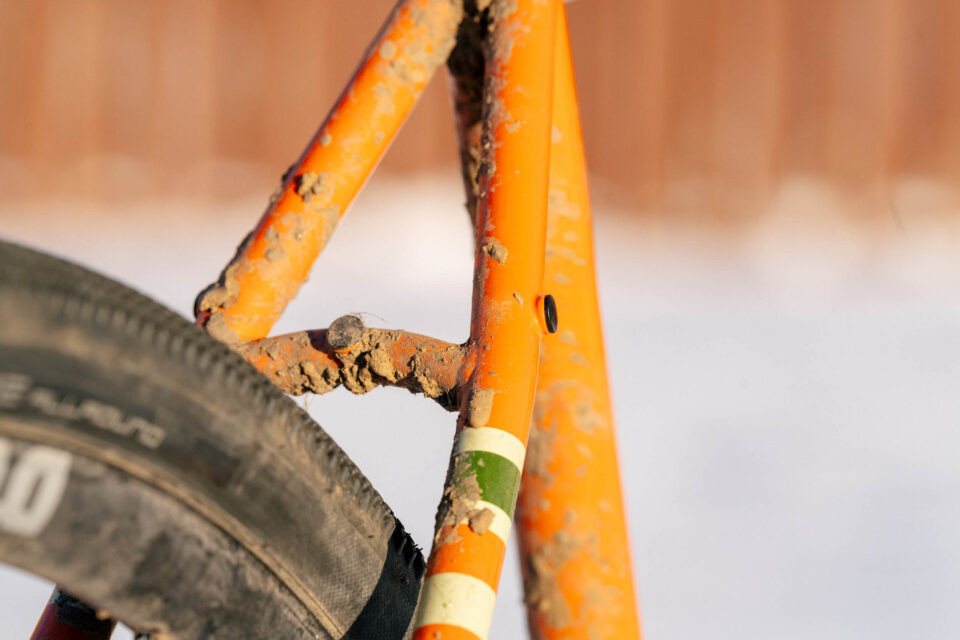 Otso Warakin Review Steel
Otso Warakin Review Steel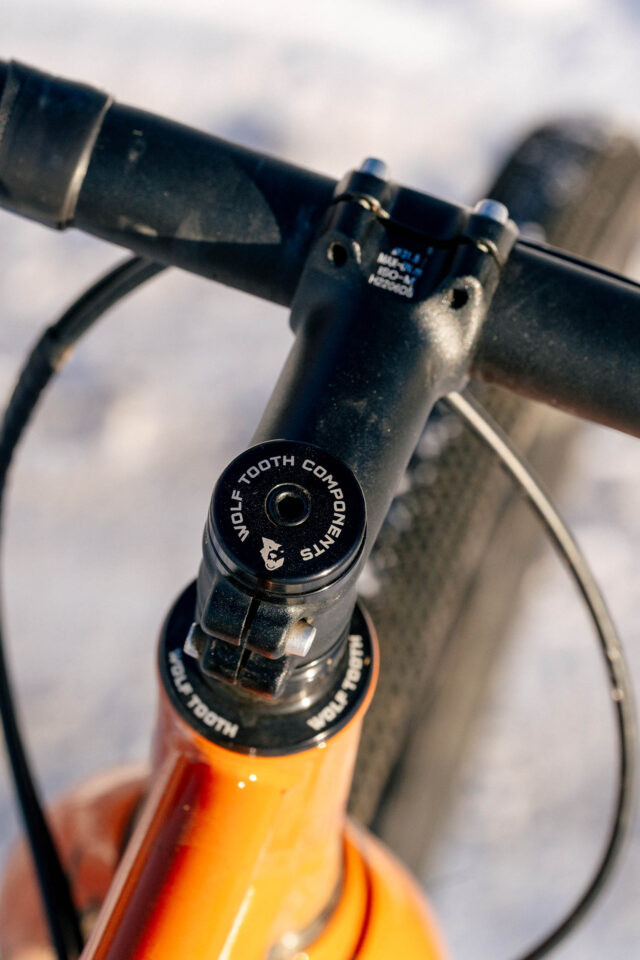 Otso Warakin Review Steel
Otso Warakin Review Steel
Otso specifies frame compatibility with various tire sizes: 700c x 50mm, 650b x 50mm, and 700c x 35mm with fenders.
A significant update to the Warakin from its stainless steel and titanium predecessors is its suspension-corrected design. The bike now features a 47mm offset Lithic Hiili carbon fork, built around a 420mm axle-to-crown measurement. This design choice allows for easy swapping with comparable forks like a Cane Creek Invert or RockShox Rudy. While other options are compatible, forks with significantly different dimensions could alter the bike’s intended handling, potentially making it longer, slacker, and taller.
Riding Experience of the Steel Gravel Bike
My inaugural ride on the Warakin was a road cycling route up the Colorado National Monument near Grand Junction. While on a press trip with DT Swiss, road riding wasn’t my preference, but the pavement served as an ideal introduction to the bike. Initially, the fit felt slightly extended, but as the ride progressed, it proved well-suited for the all-road category. During climbs, I tested its responsiveness with strong efforts on steeper inclines. To my surprise, the bike felt remarkably responsive and impressively efficient when I pushed harder.
 Otso Warakin Review Steel
Otso Warakin Review Steel
However, the descent presented a different experience. As we turned for the downhill, I quickly realized this bike differed from my usual rides at high speeds. The steep head tube angle and shorter wheelbase made me feel somewhat cautious. Keeping pace with local riders on winding roads was challenging, and attempting high-speed descents over 40 mph on a new bike is not advisable. Fortunately, the following two days shifted focus as we loaded our gear and ventured onto dirt trails.
On these off-road rides, the Warakin’s 4130 custom-butted steel frame truly excelled. It offers a beautifully balanced feel – not overly stiff yet providing just the right amount of flex for the compliance expected from a steel frame. This responsiveness, even in the longer 440mm chainstay setting, made it easy to power up short, steep climbs and maintain a consistent cadence on longer ascents. I noticed the shorter chainstay position more on descents, where it felt less stable, rather than during climbs.
As my testing of the Warakin continued closer to home in Gunnison, with autumn fading and winter approaching, I found myself drawn to longer routes and explorations that I might have otherwise skipped on a drop-bar mountain bike or hardtail. While those bikes would have been more suitable for particularly rough singletrack, highly variable terrain, and loose conditions where larger tires would offer enhanced predictability and control, the Warakin is designed for seamless transitions between pavement, gravel, and gentle two-track roads.
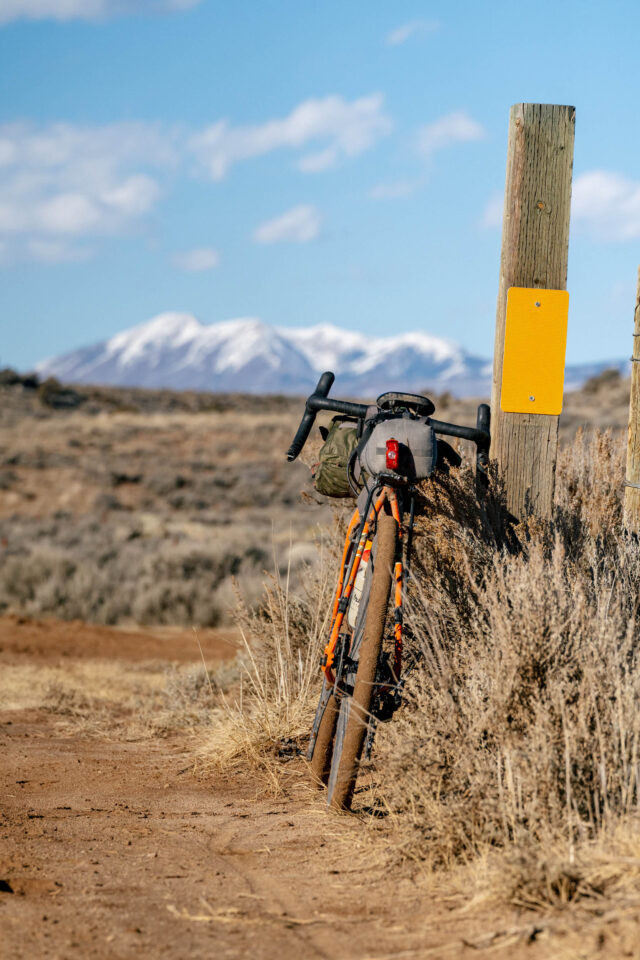 Otso Warakin Review Steel
Otso Warakin Review Steel Otso Warakin Review Steel
Otso Warakin Review Steel
It’s not designed for tackling demanding backcountry trails or icy, off-camber roads, though it can handle such conditions. I managed, but found myself lagging behind friends when terrains became particularly challenging. However, adaptation is key. Descending became more comfortable as I grew accustomed to the bike. With the Warakin, the focus shifts to precise line selection and obstacle avoidance rather than aggressively charging through rough sections.
Switching to 55mm Fleecer Ridge tires significantly boosted my confidence. Rocks felt less jarring, descents became faster, and overall comfort improved. Descending efficiency also increased, albeit with a trade-off in climbing performance, especially on pavement and smoother gravel, where the larger tires made the bike feel slightly more sluggish. Overall, the Warakin isn’t universally perfect, but within its intended environment, it truly excels. It’s efficient, versatile, and enjoyable to ride in its element.
 Otso Warakin Review Steel
Otso Warakin Review Steel
Bikepacking and Adventure Ready Features
Otso has consistently designed adventure-ready frames, and the Warakin is no exception. It’s packed with features that make it an outstanding bikepacking platform, while also being versatile enough for daily commuting. Rear rack and fender mounts facilitate easy customization for either purpose. The frame is also equipped with numerous additional mounting points, including three-pack mounts on the carbon fork, mounts under the downtube, and two mounts within the main triangle.
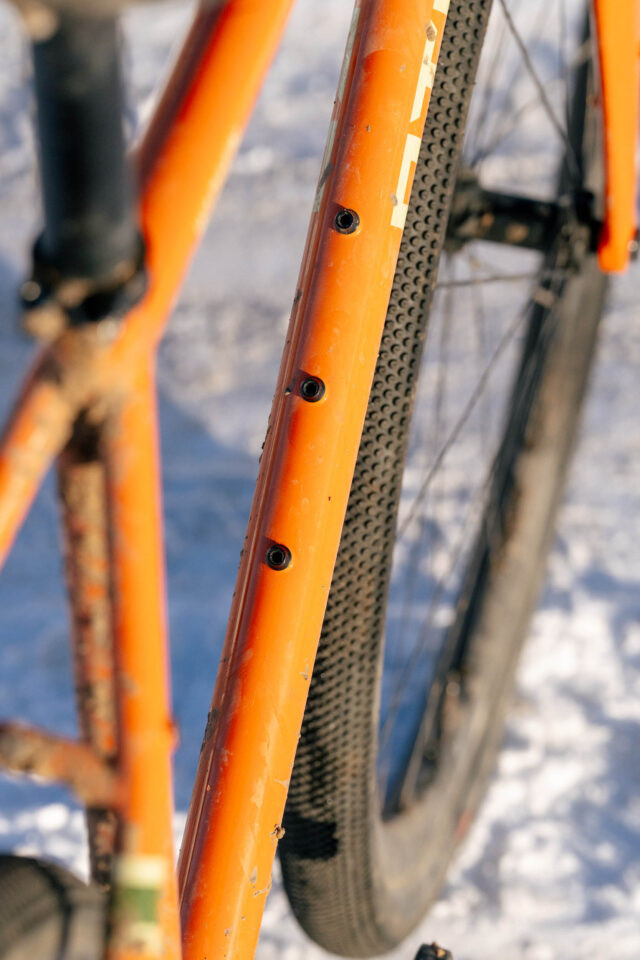 Otso Warakin Review Steel
Otso Warakin Review Steel Otso Warakin Review Steel
Otso Warakin Review Steel
There’s ample space for two water bottles and a half-frame bag, and it’s also well-suited for a large custom frame bag. Keeping weight centered within the frame enhances bike balance. When loaded, the Warakin’s tubeset provides just enough flex to absorb bumps, increasing comfort on washboard surfaces and rough terrain, while maintaining the responsive feel expected from a bike in this category. The carbon fork further contributes to this balance, improving ride quality both loaded and unloaded.
Component Highlights of the Steel Gravel Bike Build
One of the notable advantages of purchasing a bike from Otso is their custom builder, which allows for personalized fine-tuning of components such as chainring size, crank arm and stem lengths, and handlebar width. While a comprehensive breakdown of every component is beyond scope, several key components warrant highlighting.
I particularly appreciated the newer Shimano GRX 1×12 drivetrain. This was the second bike I tested this year equipped with it, and its performance is simply excellent. It offers smooth shifting, comfortable hoods, and reliable flat mount brakes – performing better than those I tested on the Esker Lorax. The 40-tooth Wolf Tooth chainring paired with a 10-51 XT cassette provided ample gear range for typical gravel riding, although some might desire a lower gear than 40-51 for very steep climbs. However, a recurring issue I’ve encountered with Shimano levers is the excessive lever throw required for shifting, which can strain my wrist, a concern that becomes more noticeable with age.
- Frame: Otso Warakin Steel, 56, Tangerine
- Fork: Lithic full carbon fork
- Front and Rear Wheels: DT Swiss GR1600 Spline
- Tires: Schwalbe G-One All Arounds 45MM
- Crankset: Shimano GRX 800
- Derailleur: Shimano 1×12 GRX 600
- Shifter: Shimano GRX 800
- Cassette: Shimano SLX 12 Speed
- Bottom Bracket: Shimano English threaded BSA, Ø68mm
- Handlebar: Lithic Corundum
- Stem: 90mm 6061 Aluminum
- Bar Tape: Dunno
- Headset: Wolf Tooth
- Brakes: Shimano GRX 400 Hydraulic
- Rotors: 160mm centerlock
- Saddle: WTB Silverado swapped out to Ergon SR All Road Core
- Seatpost: Aluminum 27.2
My test bike was equipped with DT Swiss GR 1600 Spline wheels, as it was provided by DT Swiss for a press event. While the standard build includes SunRingle G30 Expert wheels, Otso might consider offering a DT Swiss upgrade option in the future. The stock tires were Schwalbe G-One All Arounds in 45mm width, and they proved to be… underwhelming. They rolled exceptionally well on smooth surfaces but felt unpredictable on loose-over-hard terrain, with noticeable slippage in tight corners. In retrospect, I wish I had opted for faster-rolling 50mm tires, which would likely have improved handling on chunkier surfaces.
 Otso Warakin Review Steel
Otso Warakin Review Steel Otso Warakin Review Steel
Otso Warakin Review Steel Otso Warakin Review Steel
Otso Warakin Review Steel
Lastly, the bike featured a Lithic Corundum 44cm handlebar. After using both this bar and a narrower bar on the Santa Cruz Stigmata last year, both with minimal flare, I’ve reconsidered my preference for ultra-wide, flared bars. This bar felt perfectly balanced and proportional to the bike. A 46cm width could also work well.
 Otso Warakin Review Steel
Otso Warakin Review Steel
I would have appreciated the inclusion of a dropper post. I remain convinced that a dropper post enhances nearly any bike’s capability and confidence. Given their increasing affordability, it represents a small investment for significant gains. I also wished for an opportunity to test the bike with the Cane Creek Invert fork I have, but time constraints prevented it. I believe it would further enhance the overall ride comfort.
The steel Otso Warakin is offered in Tangerine, Navy Gold, and Racing Green. The frameset starts at $1,400 USD, the GRX 1×11 build at $2,500 USD, and the tested version at $2,800 USD. It weighed 23.4 pounds (10.61 kg) with accumulated dirt. In my opinion, this is a very accessible price point. While the titanium version might offer even greater responsiveness and agility, the steel Warakin provides exceptional value.
- Model/Size Tested: Otso Warakin, Size Medium
- Actual Weight: 23.4 pounds (10.61 kg)
- Place of Manufacture: Taiwan
- Price: $2,800
- Manufacturer’s Details: Otso Cycles
Pros of the Steel Gravel Bike
- Meets efficiency standards
- Excellent balance of compliance and stiffness
- Versatile dropout system alters ride characteristics
- Mounts enhance gear-carrying capabilities
- Appealing colors and competitive price points
Cons of the Steel Gravel Bike
- Can be jarring on very rough terrain
- Tire clearance is somewhat limited (consider a Fenrir for more clearance)
- A steel fork option would be desirable
- Stock tires are not ideal for off-road riding
Final Verdict: Who is the Steel Gravel Bike For?
The Warakin is truly a versatile bike suitable for numerous applications. If you appreciate the “steel is real” feel but still aim to compete in gravel races or prioritize efficiency, this bike is an excellent choice. For bikepacking adventures primarily on gravel roads with some pavement, it’s an outstanding tool. And if you’re seeking a commuter bike, its affordable price and custom build options make it a strong contender.
Compared to other bikes I’ve tested, I generally prefer those with more tire volume, slacker geometry, and a more playful character for varied terrain. However, I also value efficiency, and the Warakin excels in this aspect. It encouraged me to explore routes and terrains I hadn’t ridden before.
While I experienced some jarring moments on particularly rough Colorado roads, the Warakin allowed me to reach those roads faster than other bikes might have. It’s about balance: in certain situations, it was the perfect tool; in others, it left me wanting more. But that’s the appeal of the Warakin: it’s adaptable, efficient, and inspires exploration, even if it means occasionally being slightly under-biked.
Further Reading on Gravel and Bikepacking Bikes
Explore these related articles for more information…
[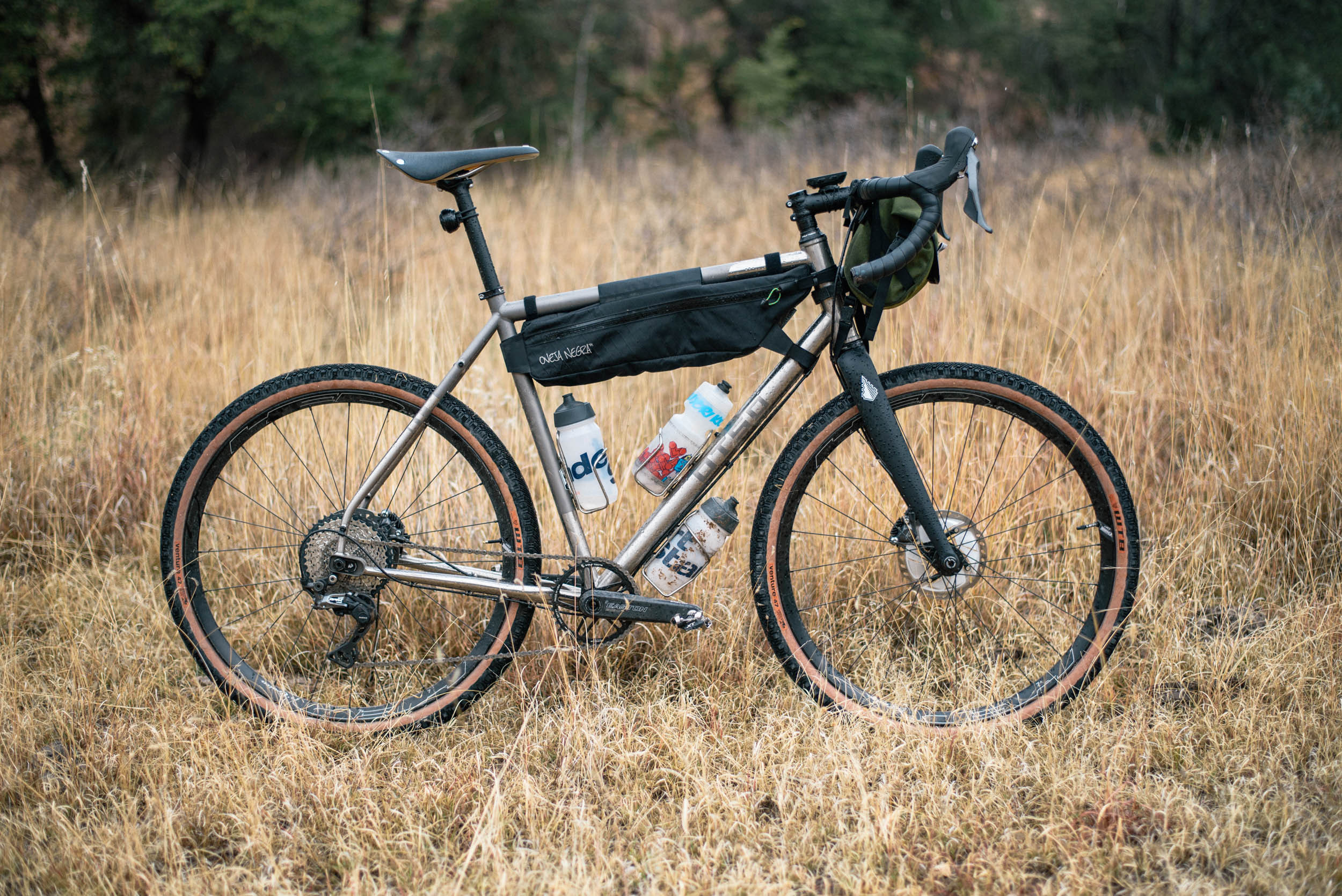 Otso Warakin Ti41
Otso Warakin Ti41
Bikepacking Bikes
Otso Warakin Titanium Review: Get Carried Away](https://bikepacking.com/bikes/otso-warakin-ti-review/)
[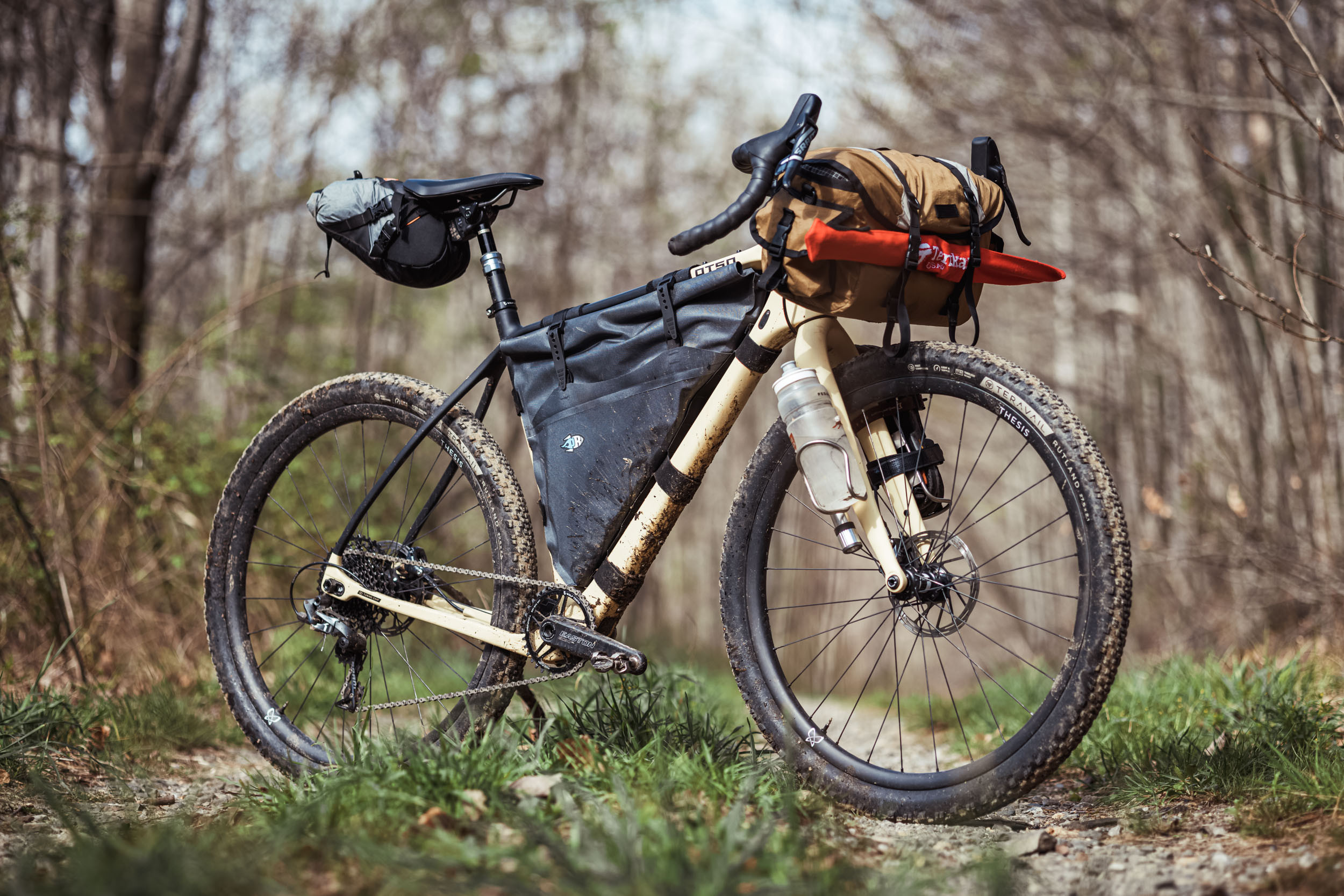 Otso Waheela C Review28
Otso Waheela C Review28
Bikepacking Bikes
Otso Waheela C Review: Three’s Company](https://bikepacking.com/bikes/otso-waheela-c-review/)
[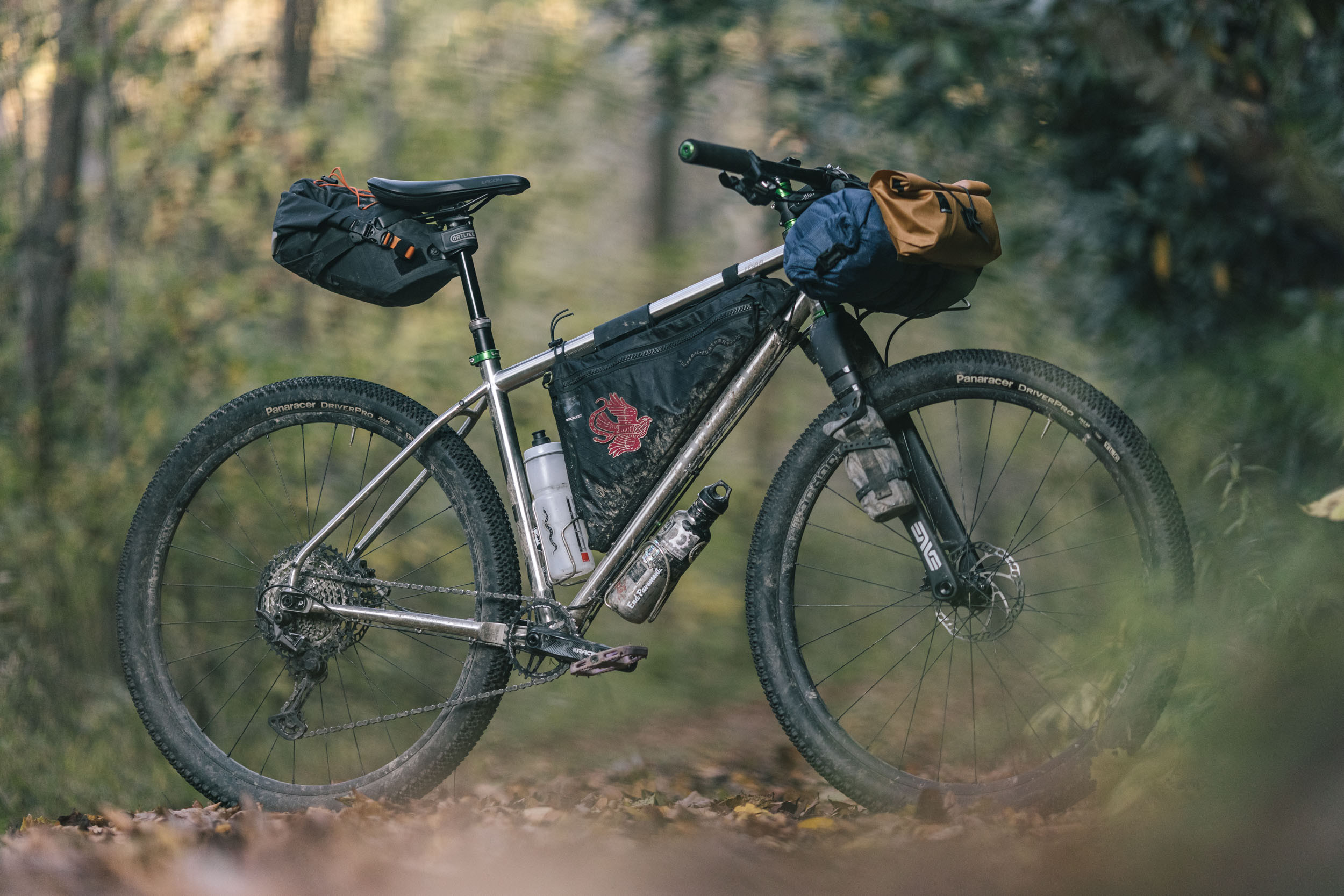 Otso Fenrir Review40
Otso Fenrir Review40
Bikepacking Bikes
Otso Fenrir Review: A Two-headed Beast](https://bikepacking.com/bikes/otso-fenrir-review/)
FILED IN (CATEGORIES & TAGS)
[
